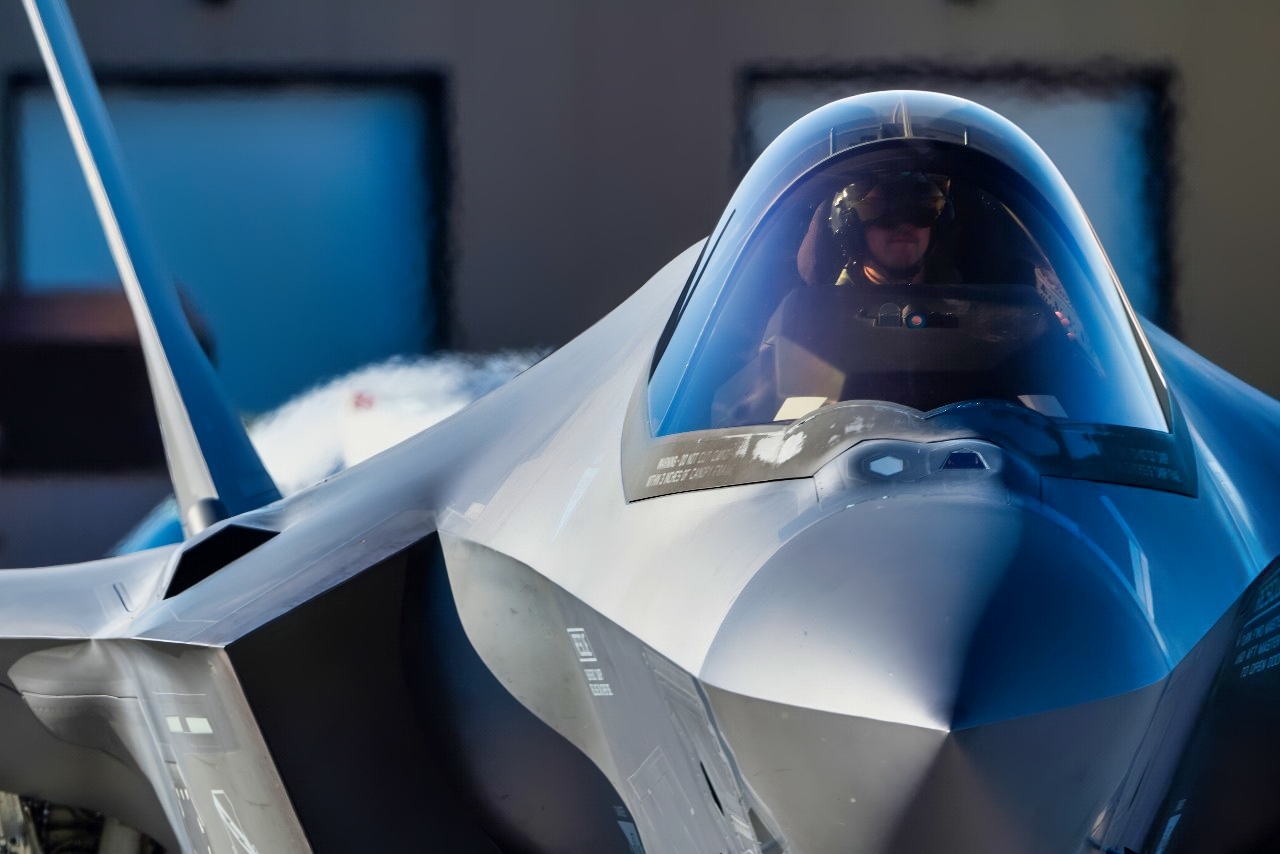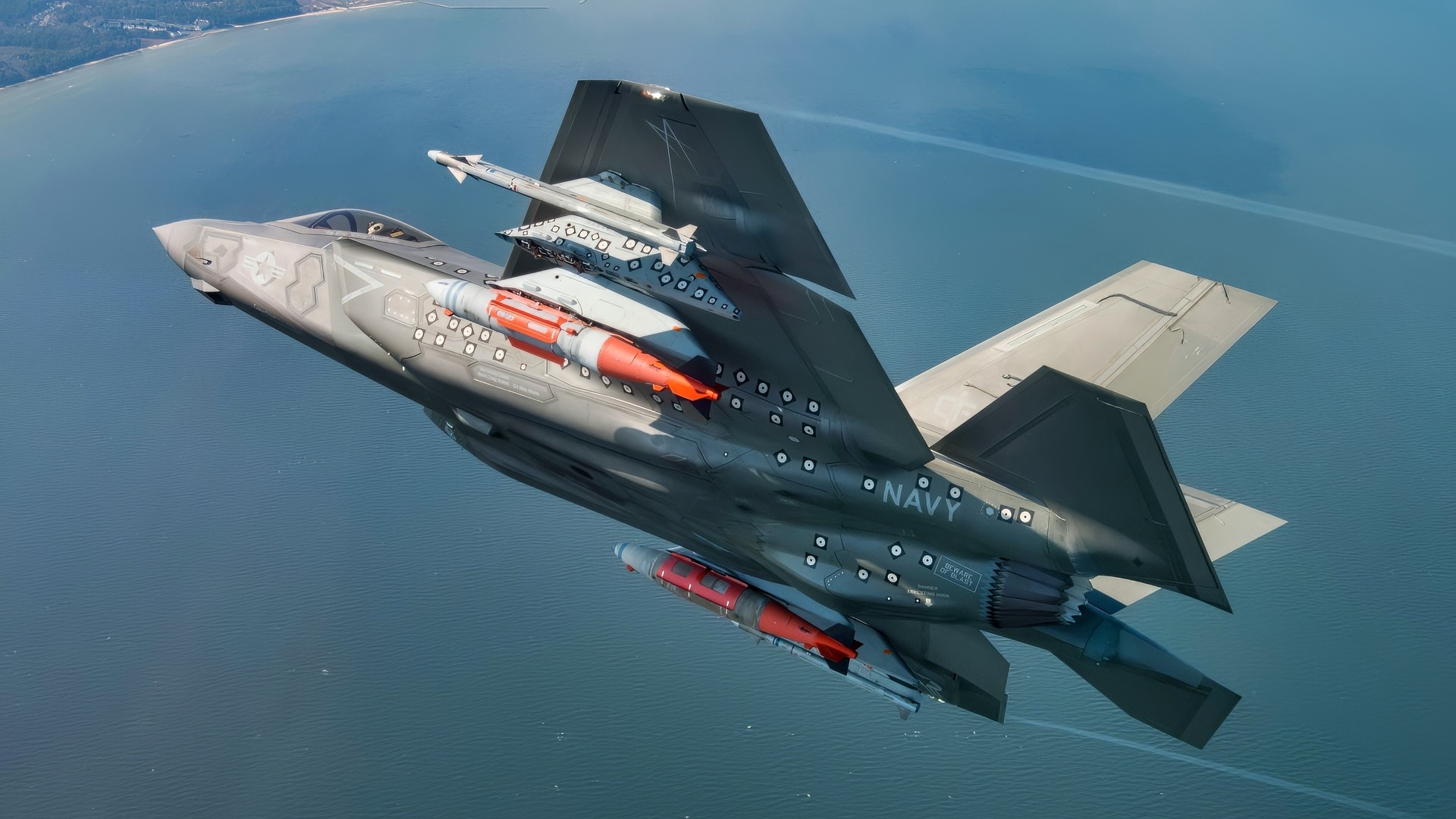Key Points and Summary – Lockheed Martin is pitching a “Ferrari” makeover for the F-35: fold select sixth-gen tech from its losing NGAD bid into thousands of Lightning IIs.
-CEO Jim Taiclet says the upgrade could deliver “80% of sixth-gen capability at half the price,” adding AI-driven sensor fusion, CCA loyal-wingman control, enhanced stealth, new weapons—including hypersonic and directed-energy prospects—and possibly a faster engine pushing past Mach 2.
-Details are classified and no acquisition path exists yet, raising questions about overlap with Block 4 and whether DoD will prioritize drones. Israel’s customized F-35I shows the concept’s promise, but Ferrari could be pitch as much as plan.
What to Make of the F-35 ‘Ferrari’ Concept
The late sports car king Enzo Ferrari probably never expected his namesake to be associated with an airplane, but that is what is happening with the F-35 Lightning II. The stealthy fighter jet may now incorporate sixth-generation traits associated with future flight.
The new resulting “Ferrari” hot rod could make the F-35 into a fifth-generation “+” fighter. This is an exciting development for Lockheed Martin, the manufacturer of the F-35.
This came about because of a competition with Boeing to produce the new sixth-generation F-47 NGAD. Lockheed Martin lost the bid to Boeing, but Lockheed had developed some newfangled technology for its entrant that can now be incorporated into the F-35 to make it an advanced fighter nicknamed the Ferrari.
What is the Lockheed Martin CEO Saying?
Jim Taiclet, Lockheed Martin CEO, said in April that the F-35 could achieve “80 percent of six-gen capability at half the price.”
Taiclet said that he was taking his Ferrari concept to the highest levels of command so the Department of Defense could examine the viability of incorporating sixth-generation features into the F-35.

An F-35A Lightning II fighter jet, a single seat, single engine, all-weather stealth multirole fighter aircraft, assigned to the 466 fighter squadron prepares to taxi across the flightline at Hill Air Force Base, Utah, Oct. 5, 2024.
“There’s a very active engagement at an extremely high level with the Department of Defense, and I expect it’ll be taken to the White House sometime soon, hopefully, to consider this kind of concept,” Taiclet told investors at the Morgan Stanley conference.
“We’ve gotten encouraging feedback. … There’s significant interest in the government regarding the discussion of aircraft modernization, from the administration level to the White House level. We’re in the midst of that with them, and we’re being heard. We’re hearing back, and it’s pretty active.”
What New Innovations Could Become a Reality?
Taiclet said that he is bound to confidentiality regarding what the “Ferrari” designation means because future modifications are classified.
But one could assume that stealth coatings will be improved to absorb radar better than the base model F-35. The Lightning II Ferrari will likely feature a manned-unmanned teaming function with the new Collaborative Combat Aircraft (CCA), a drone that can enhance lethality through improved firepower, electronic warfare capabilities, intelligence, surveillance, and reconnaissance collection, as well as battle damage assessment abilities.
Hypersonic Weapons Could Be On Board
The F-35 Ferrari concept could include the airplane’s ability to drop or launch nuclear-tipped hypersonic weapons, making the aircraft a true strategic asset that could strike targets with a nuclear device. This would give policy makers, generals, and admirals better potential use cases against the enemy.
The F-35 is already a “flying computer,” but in Ferrari mode, it could become a supercomputer in the sky. Artificial intelligence in the cockpit could increase survivability and situational awareness. For better control of drones, the airplane could incorporate elements of quantum computing.
The Ferrari may be equipped with lasers and the ability to reach high altitudes that could “fry” a satellite. That may be a bridge too far for that feature as the F-35 is not equipped now to get that height, but anything is possible for the Ferrari. It could also be part of the “Golden Dome” missile defense umbrella. The directed energy system would be better equipped to intercept enemy ballistic missiles.
Let’s Give the F-35 Some More Speed
The Ferrari concept could include new engines. We are talking about speed here, and the base model F-35 only reaches a top speed of MACH 1.6. The souped-up version would be considerably faster – maybe not hypersonic speed, but more likely a better velocity over MACH 2.
Taiclet estimated that Lockheed could convert between 1,000 and 1,500 F-35s to the Ferrari standard. He didn’t say how much this would cost or if Secretary of Defense Pete Hegseth is on board with the plan.
Likely, Lockheed is indeed in discussion with the Department of Defense, though, and Taiclet is enthusiastically pleading with the DOD to pursue the Ferrari concept. Hegseth, in the past, has emphasized his preference for unmanned flight, and the CCA aspect could be intriguing for him. Friends (or past friends) of the Trump administration, such as Elon Musk, have posted on X that the F-35 should be cancelled in favor of drones.
Taiclet admits that there is no acquisition plan or roadmap for creating some type of contract vehicle to transition to the Ferrari concept.
“The way to contract this will probably not be visible to folks, because it will have so much classified content that it may not be disclosable, but I’m really quite confident that this concept has great merit,” he said. “We can provide value at that level, at that scale, by integrating sixth-generation technology, digital and physical, into our aircraft we’re already building,” he said.
Taiclet did not explain how his Ferrari concept would affect the F-35 Block 4 round of upgrades that are planned for the coming years.
Moreover, this Ferrari proposal could also be a public relations, sales, and marketing effort to keep the F-35 and Lockheed Martin in the conversation after losing the F-47 NGAD bid.
Israelis Made a Hot Rod Too
The Ferrari concept, you have to admit, is exciting if it comes to fruition.
One of the original goals of the F-35 was that it could be upgraded to your heart’s content. Look at what the Israelis have done. They made their own Ferrari version called the F-35I Adir, which has enjoyed an excellent combat record against Iran and terrorist groups operating near Israel.
We’ll keep an eye on Lockheed Martin to see if this Ferrari concept will roar to life or if it is just a marketing effort for more international sales and to help profit growth for the behemoth defense contractor. The Ferrari concept is intuitively appealing and an exciting group of potential upgrades to make the F-35 into a better all-around airplane.
About the Author: Brent M. Eastwood
Brent M. Eastwood, PhD is the author of Don’t Turn Your Back On the World: a Conservative Foreign Policy and Humans, Machines, and Data: Future Trends in Warfare plus two other books. Brent was the founder and CEO of a tech firm that predicted world events using artificial intelligence. He served as a legislative fellow for US Senator Tim Scott and advised the senator on defense and foreign policy issues. He has taught at American University, George Washington University, and George Mason University. Brent is a former US Army Infantry officer. He can be followed on X @BMEastwood.
More Military
How the F-14 Tomcat Fighter Went to War Without Spare Parts
Fact: The F-35 Can’t Be Replaced
How Do You Replace the Main Battle Tank?
The F-35 ‘Ferrari’ Fighter Might Be ‘Coming Soon’ to a War Near You










